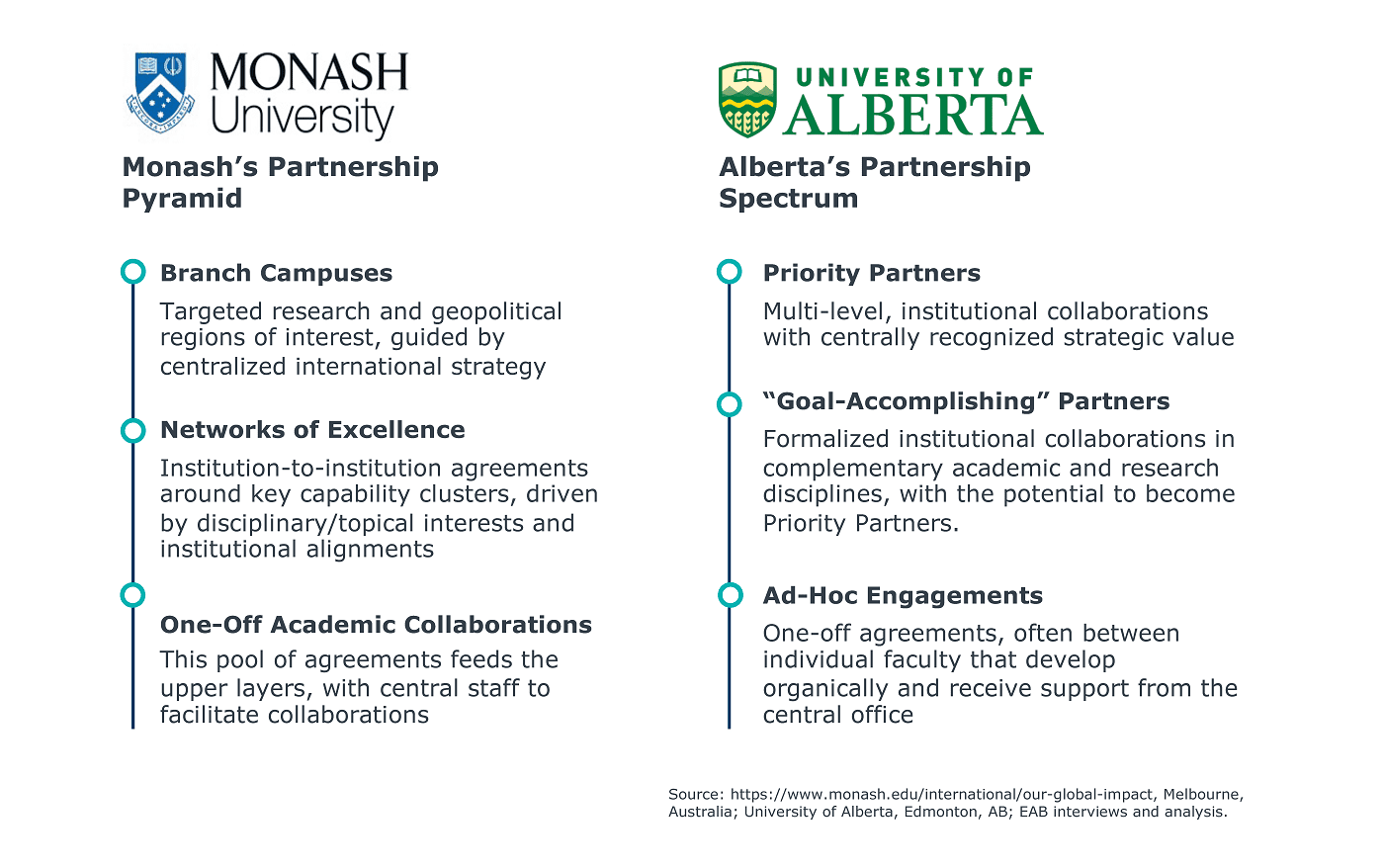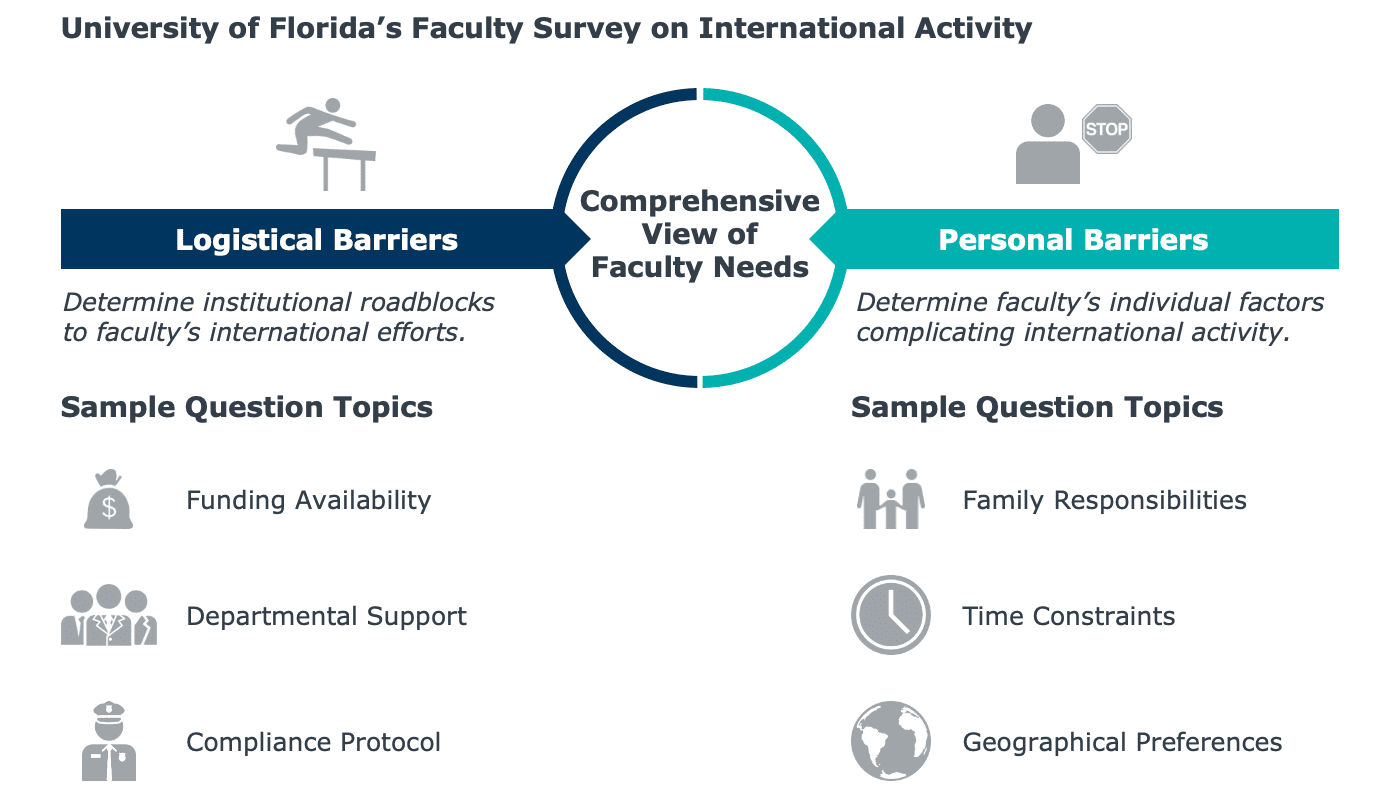Create High Impact International Partnerships
International partnerships used to be siloed and unmonitored. However, university partnerships should align with their missions and advance their global statuses. Use this Roadmap to learn how to create high impact international partnerships

Empower an international champion to lead partnership efforts
Institutions face international partnerships challenges ranging from logistical complexities to cross-border disputes. Universities can maximize collaboration benefits and minimize risks by creating an international strategy champion. Empowering a single role to oversee international strategy and global engagements helps ensure institutional stakeholders collaborate effectively while preventing partnerships from stagnating or becoming unsustainable.

Explore some research highlights and quick tips

Define your international partnership portfolio strategy
An international partnership portfolio strategy is a central, guiding vision for an institution’s international involvements. Portfolio strategy defines the collaboration types, key regions, institution types, and topic areas the institution will most often pursue or encourage to support their broader mission.
A robust portfolio strategy will direct international investment to viable partner institutions and decrease the number of low-return partnerships.


Next, additional tools to heighten your international brand

Grow your international partnership portfolio
Institutions must identify potential partners and decide how to approach them. Priorities such as region, partnership type, research topic, or academic discipline will help identify high potential institutions. Portfolio growth does not require a brand-new institution.
Universities may also deepen partnerships with existing collaborators. Once your institution is ready to approach a partner, give your partnership the best chance by working on a partnership proposal. To best identify or approach the desired partner, institutions should use one of the 17 go-to-market tactics to view nuanced approaches to different institutions focusing on mutual benefit.

Next, get the implementation support

Eliminate common barriers for participating faculty
Faculty must balance a myriad of responsibilities including teaching, research, and administrative duties which can limit the time they have to pursue international partnerships. Institutions should aim for their faculty to fully participate in their partnership without having additional barriers of administrative work. To ensure successful international partnerships exist among faculty, university leaders can provide faculty with travel guidance, regulatory and compliance assistance, technology support, and seed funding opportunities.
An international strategy champion should have open lines of communication with faculty for financial and legal reporting, research progress, and research outcomes. If faculty consistently report their research activity, the strategy champion can properly direct any concerns to streamline to appropriate parties.

Quick Tip

Monitor and evaluate partnerships to prioritize successful collaborations
Tracking partnership progress helps avoid unnecessary risk and identifies activity with diminishing returns. Historically, measures such as publications and university rankings were used to evaluate partnerships. However, these metrics lag and often fail to capture real-time growth.
Metrics such as the number of engaged faculty, number of students exchanged, or total grant money awarded can be key indicators for future success and sustainable partnerships. The University of Calgary created an evaluation tool to track historical performance in addition to current and forward-looking metrics.

Research Highlights

This resource requires EAB partnership access to view.
Access the roadmap
Learn how you can get access to this resource as well as hands-on support from our experts through Strategic Advisory Services.
Learn More